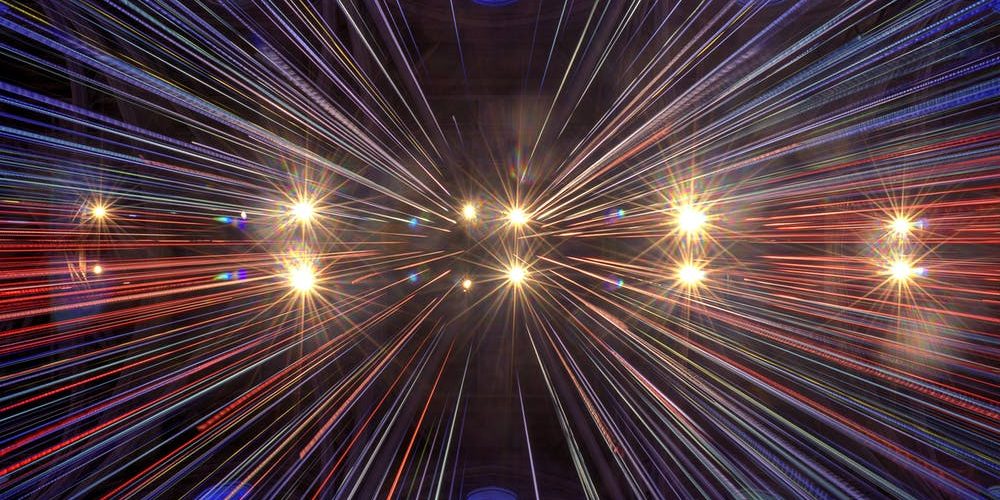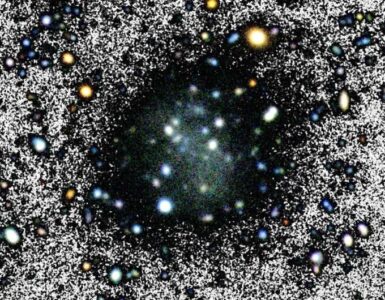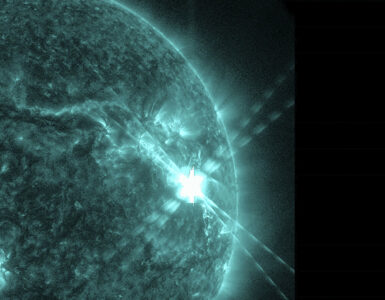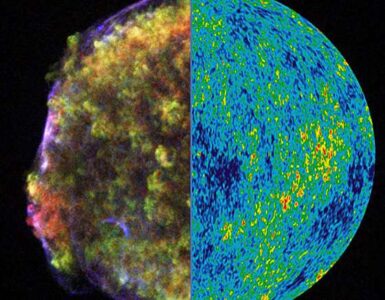by A’liya Spinner
A Wrinkle in Space-Time
The warp-ship Chariot careened through the empty void of space, past the last reaches of lonely Pluto and towards the star-studded blackness of the “Between”— the vast, unoccupied space that separated solar systems. From the rounded bridge of the Chariot, the Between looked tiny, reasonable. But the expansive nothingness between those twinkling dots, the crew knew, was a voyage of tens of thousands of years.
Or, at least, it would have been just a decade or two before. Since then, technology had evolved to concoct a solution to the seemingly ungraspable limit of the speed of light, and now the Chariot was about to take its maiden voyage before the eyes of the entire world, and test if all those theories, trials, and simulations were really true. If humanity could, at least, break the light barrier and venture into and past the Between.
“Status on the Bubble?”
The helmsman— who was responsible both for navigation and for monitoring the warp-ship’s propulsion systems on the Chariot’s skeletal crew (to limit casualties incase of disaster)— looked up as the captain broke the tense silence. She glanced down to her console, at the monitors and dials and nodes. Everything was still within safe parameters; lights were green; alarms were silent.
“T-minus forty-five seconds,” she answered the captain, “electromagnetic plasma fields in place. All systems operational.”
“Good,” he answered, “keep ‘er steady.”
The helmsman nodded, but did not reply. The silence on the bridge was almost deafening except for the beeping and whirring of machines. Scientists both honored and terrified to be included on the mission crowded a monstrous steel amalgamation of instruments, monitoring and recording everything that happened inside and outside the craft. A representative from the United Nations sat, fidgeting, beside the captain, unsure what to do with her hands. The engineer who had pioneered the Chariot’s design and argued with the international government until he was allowed to be aboard her maiden flight paced in the back, watching diagnostics flash across impossibly complicated diagrams that he had long since committed to memory.
“T-minus fifteen seconds.”
The captain leaned forward in his seat. The helmsman’s hands shook, just barely, at the controls. Beyond the bridge’s window, the Between was beginning to be obscured by amorphous veins of plasma.
“T-minus ten seconds…”
The warp-ship shuddered as it drew in the last of its energy stores. The rumble of its traditional engines died away, replaced by the roar of electromagnetic current rushing through the reinforced walls.
“Five… four…”
The Chariot had become wreathed in energy, heat, and light.
“Two… one. Bubble ready, sir.”
The captain rose, standing amid his crew and vibrating warp-ship. Invisible to the eye, he knew space was beginning to fold in around the Chariot, preparing to severe them from Earth— from the universe as they knew it. He flicked his hand forward and breathed deeply.
“Engage.”
Warp Waves
Faster-than-light travel (FTL) has been a staple of science-fiction since the genre’s conception, known by a variety of names such as “space-time folding” in Dune (1965), “warp” in Star Trek (1966), “hyperdrive” in Star Wars (1977), and countless other monikers in books, movies, and games since then. But despite its popularity, the scientific community has long agreed that FTL travel is and always will be purely fiction. Even Einstein, when creating his famous Theory of Relativity, added that nothing could move faster than light particles. Over time, this theory was challenged by the idea that maybe, while we can never meet or exceed the speed of light unobstructed in a vacuum, we could potentially accelerate particles faster than light travelling through air, water, or other matter— which has been proven possible. However, using extreme amounts of energy to propel these particles through water so that they move faster than light particles in a similar environment is only going faster than light by technicality. This method still brought us no closer to traveling faster than light in the vacuum of space.
Now, however, there may be another way. A new theory by University of Göttingen researcher Erik Lentz proposes a method of finally exceeding these limits— a soliton. Soliton is a loosely-defined, scientific term used to describe a self-sustaining, solitary wave packet. Unlike other waves, which change form over time, solitons have a specific shape that does not disperse (this is called the Kerr effect.) Because of this, solitons are able to permanently maintain a constant velocity without losing energy during interaction. Lentz proposed that, using technology already available to us, the structure of space-time could be arranged inside a soliton to form a “warp bubble”. Unlike physical matter, space-time can bend and stretch at virtually any speed and in any way; the artificial soliton would contract space in front of it and expand space behind it, allowing anything inside of it to travel faster than light without breaking any physical laws.
How is this different?
Most FTL schemes follow a general model that incorporates existing positive and negative energy, according to Advanced Propulsion Laboratory researchers Alexey Bobrick and Gianni Martire, but Lentz’s idea is in a class all of its own. It builds on a theory broached in 1994 by theoretical physicist Miguel Alcubierre that compressing and expanding space time is obedient to the rules of General Relativity, because although you would be traveling faster than light to an outside observer, you would be moving at a slower rate inside of the “warp bubble” itself, eliminating the need to propel a spacecraft at impossible speeds, and simply reducing the distance it needs to travel. This concept was explored in Madeleine L’Engle’s famous 1962 science-fiction novel, “A Wrinkle in Time”, in which the titular wrinkle is the folding of space-time fabric to send travelers on a shortcut across the vastness of space. At the book’s conception, this was far from being possible, but Lentz is confident that his theories on restructuring space-time within soliton bubbles is a workable solution to superluminal travel. This inner configuration could potentially even solve the “twin paradox”— wherein one twin travelling at close to the speed of light ages slower than their sibling on Earth— by configuring a region inside the soliton with minimum tidal forces. Hypothetically, time would progress at the same rate inside the bubble as out of it, and both twins would be the same age upon the traveler’s return to Earth.
Lentz’ proposal is especially important because it is one of the only theories for FTL travel that does not require the usage of negative energy, something that Alcubierre’s theory still relied on. In order to do this, the spacecraft would need to be immense, as negative energy is created when particles and antiparticles are separated by the pull of a concentrated mass and an imbalance is formed. But even if the theory is sound, the application is not. Alcubierre’s warp drive would’ve required the mass of the entire visible universe to propel itself. In 1999, a physicist named Chris Van Den Broeck proposed a more “reasonable” formula that expanded the volume of the warp bubble without changing its surface energy. This, however, still required the drive to have a mass equivalent to that of the sun’s, an improvement, but still well beyond the bounds of feasibility.
Erik Lentz’s warp bubble, too, requires vast amounts of energy— but positive energy only, which can be created through conventional means, such as nuclear fission. Right now, Lentz’s soliton wave requires thirty orders of magnitude more energy to create than is possible with modern nuclear technology, but he is hopeful that energy-saving mechanisms proposed in earlier research can potentially lower that amount to a much more reasonable range, at which point it may be possible to start building physical prototypes of his theoretical engine.
What’s stopping us?
The major obstacle between us and a functioning prototype of Lentz’s warp bubble is, as already mentioned, the energy cost. But, provided that can be solved, there are still some concerns that are only now being raised because of the newness of this theory— and there will be many more discovered in the future, without question. One such issue, for example, which was raised with the Alcubierre warp drive and was not solved by Lentz’s positive-energy variation, is that while the bubble is in operation, it is impossible for the passengers inside the fold of space-time to communicate with those outside of it. This brings up questions as to how a crew could operate and control such a craft, especially in potentially hazardous zones of debris, asteroids, or other obstacles that those inside of the bubble are unable to see. As of now, there are no known solutions to this problem, although we will undoubtedly see more serious conversations centered around faster-than-light steering surface as the technology to create these superluminal bubbles becomes closer to fruition.
The second major barrier is the creation of the soliton bubbles themselves. As well as requiring massive amounts of energy to propel and operate them, wave packets of space-time are not easily made. Lentz believes that the stress-energy of conducting electromagnetic plasma may be sufficient to create his solitons, but unfortunately, plasma made in modern laboratories is several orders of magnitude too small to produce anything of the scope Lentz describes. In his original paper, Lentz states that this could possibly be solved by further theoretical work at the interface between plasma physics and our understanding of general relativity.
But, even if that proves impossible, there may be another way— by “catching” solitons that have already been created. When aging stars in a particular size range exhaust their fuel, they collapse and go supernova, forming incredibly dense neutron stars. During this collapse, their magnetic field lines are trapped and compressed to incredibly high field strengths; neutron stars with especially powerful fields are called magnetars. Magnetars are the astronomical source of regular gamma ray bursts, and some scientists believe that the ultra-magnetized plasma surrounding these stars may spontaneously create Lentz solitons, which are then propelled away from the star at extreme speeds. Such events could be observed with the right gravitational wave detectors or radio interferometry, and thus may lead us to finding and possibly “catching” a soliton that already exists somewhere in our universe.
Time and Travel
The applications of a device capable of FTL travel are both obvious and limitless; it would revolutionize our ability to reach, research, and resettle on nearby planets, such as Mars. It would also, for the first time, grant us the ability to leave the confines of our solar system, and explore the galaxy beyond. Not only does this give us the chance to study more planetary bodies, stars, and astral formations, but make new and rare resources available to us with which to better care for our own planet and create more sustainable technology.
And— as fiction has speculated about in many forms— possibly discovering life in some form beyond planet Earth. Even if we cannot physically meet an alien race, sentient or primordial or wherever in between, warp technology makes us able to send messages and information across extreme distances very quickly (on a cosmic scale, at the least), which would expand the range of our probes and communication network to the point where perhaps we can observe or exchange phone numbers with our extraterrestrial neighbors.
These devices, however, could be useful on Earth, too. Earlier, it was mentioned that the soliton could be constructed to minimize tidal forces, but what if one could be made that does just the opposite? Dr. Sam Baron, a metaphysicist and Associate Professor at Australian Catholic University, expressed doubt that Erik Lentz’s machine could ever fly, and instead considered how the technology could be implemented as a time-manipulating device. By structuring the warp bubble just right, Baron postulated that time would pass slower or faster than it did in the outside world. The practical uses for this are boundless— growing crops overnight, prolonging the lives of terminally ill patients until a cure can be found, speeding or slowing reactions, decomposition, and even adaptation to aid in its study. Baron even proposed that rotating space-time bubbles inside of a warp drive could create a battery capable of storing immense amounts of energy.
Whether it’s used in time or travel or both, it’s clear that space-time manipulation and the “warp drive” is getting closer and closer to leaving science-fiction and becoming a reality. As with any technology so young, it’s hard to foresee the pitfalls that most certainly await us, but once an idea is brought to the public and scientific eye, it’s rarely given up, and almost never forgotten. Although it won’t be in the form of the gallant Starship Enterprise, superluminal travel will continue to take shape and prevalence in our lifetime. Perhaps we will even live to see— or be— the first humans to venture beyond our solar system, and into the great unknown.









